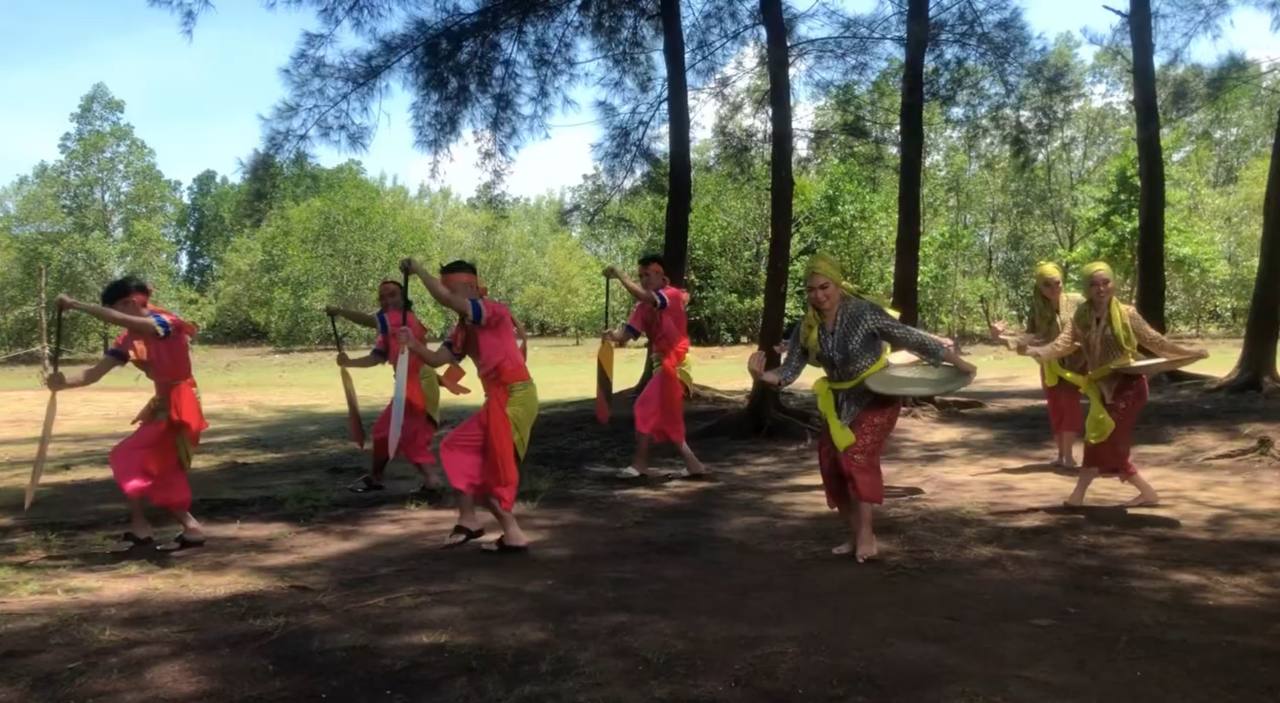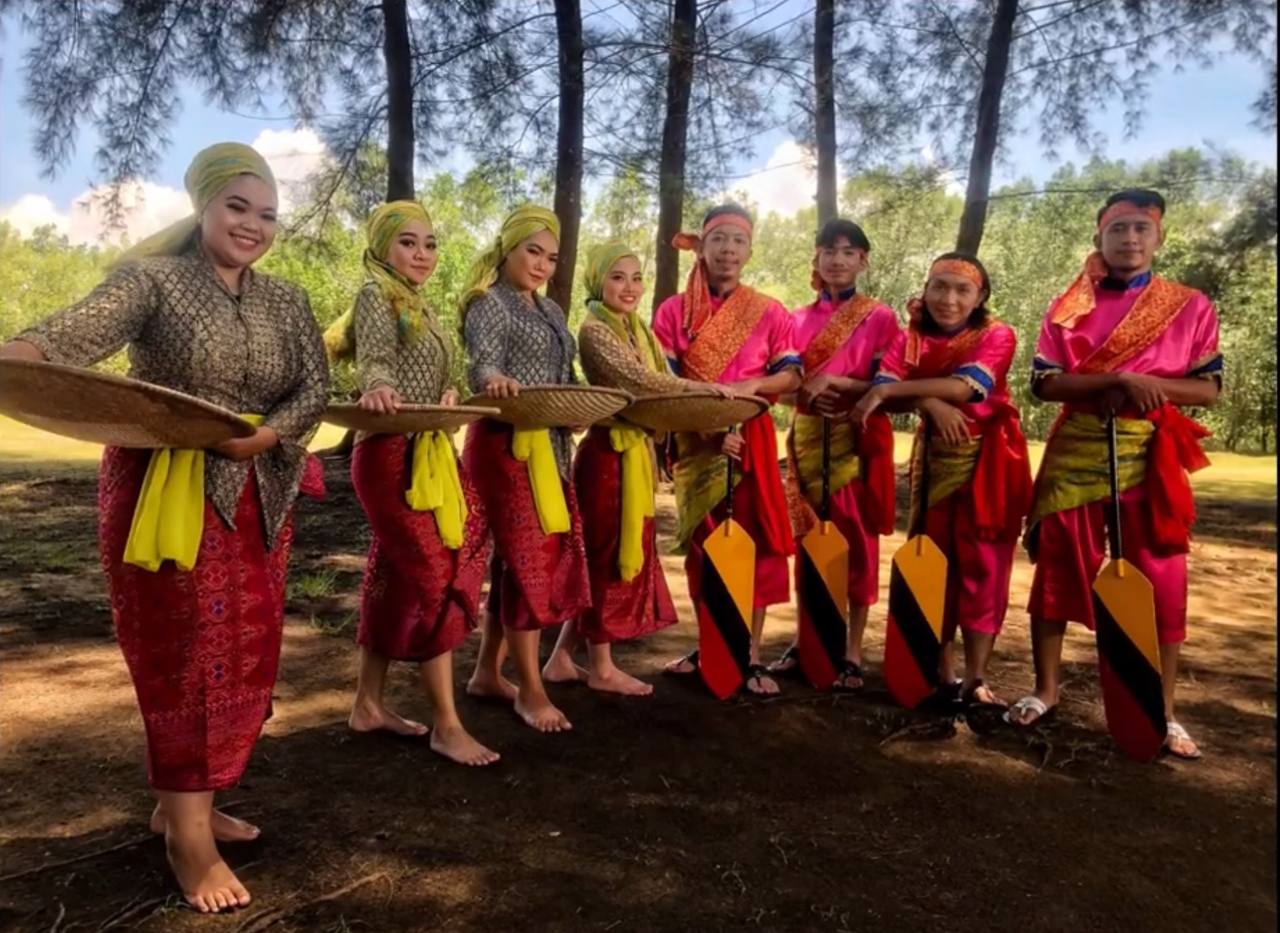ARTS AND CULTURE INFORMATION GATEWAY
Immerse yourself in the colorful world of art and culture! From traditional heritage to contemporary works, discover uniqueness that reflects the nation's identity and identity
TARIAN ADAI-ADAI
Picture
2
Video
No record
Today's Visitor
5
Number of Visitors
1479
Introduction and history
Adai-Adai dance is one of the traditional cultural arts of the Brunei community in Sabah, Malaysia. It evolved from an oral tradition in the form of a pantun. It was sung collectively by the Brunei community living on the coast, especially in the districts of Menumbok, Sipitang, Kuala Penyu, and Beaufort. In ancient times, the Adai-Adai song was sung spontaneously by fishermen when they caught fish in the sea as a way to relieve fatigue when 'Berkarang' (work) and boost their spirits. Over time, this song developed into a form of dance based on the story of how a fisherman goes to the sea to catch fish and also tells about how wives welcome their husbands back on the shore after returning from the sea. In today's context, the adai-adai dance has become a form of cultural performance performed in various cultural events and wedding ceremonies, as well as becoming a symbol of Brunei's ethnic pride.
The Adai-Adai dance is not only a form of entertainment but also contains the traditional values and customs of the Bruneian community. This dance commemorates the life of the fishing community in the past and preserves cultural heritage for the younger generation. In today's contemporary context, the Adai-Adai dance is often performed in cultural festivals as well as official events or public events, making it a tool for empowering the Bruneian ethnic identity in Sabah.
The male dancers will wear a plain Teluk Belanga Melayu costume or just a colorful square pattern print. This costume is worn with a sampin made of kain pelikat tied diagonally or kain sarong positioned into a sash. In the headdress, male dancers will usually tie a cloth on the forehead or use a thin sarong cloth. Meanwhile, the male dancers will use canoe paddle props throughout the performance.
For female dancers, the costume used comprises two types: baju kurung kedah, or in the local language called 'Baju Opah', or a short kebaya with a matching skirt made of batik cloth. On the female dancer's head, batik cloth is styled into a veil to cover the head, or it can be adapted with contemporary decorations using hairpins and flowers. Then, the hand props used by female dancers are cane rattan winnowing trays to show the act of winching or placing the catch of fish.
The use of musical instruments in this dance is unique because once upon a time, this dance did not use any musical instruments, instead uses only the chorus of dancers singing, the sound of paddlers hitting the pinara of a sampan or boat being rowed and the sound of blows on the buyung or keduit. However, nowadays, musical instruments such as tambourine and gambus have been used to accompany this dance performance to provide varied sounds and melodic rhythms.
The Adai-Adai dance performance involves a combination of dance moves and group singing by all the dancers. Male dancers will imitate the movements of fishermen at sea, such as rowing a boat, spreading nets, and pulling in the catch. Meanwhile, the female dancers will perform movements using nyiru by imitating the movement of winnowing or arranging the fish caught by their husbands. The basics of this movement will be done repeatedly according to the floor pattern arranged by the choreographer. The Adai-Adai dance performance method and its description can be seen in Table 1 below:
Table
1: Adai-adai Dance Performance Method
|
Performance
Method |
Movement
Description |
|
Entry
movement |
In the
entry movement of the Adai-adai dance, the dancers interact with each other
before moving to their respective positions. Music is played first as a
starting signal before they step on stage. |
|
Sitting
movement |
This
sitting motion prepares the dancer for movement after the song is sung.
Usually, female dancers perform this movement while waiting for the presence
of fishermen or male dancers on stage. |
|
Standing
movement |
Standing
movement is one of the dominant elements in Adai-adai dance. It is often the main feature, especially among
male dancers, since most of the dance moves are performed in a standing
position. This movement plays an important role in choreographing the entire
performance. This standing position gives the dancer space to move more
dynamically and freely while adding visual intensity to the performance as a
whole. |
|
Paired
movement |
The
paired movement in this dance is intended to show the cooperation between
male and female dancers, depicting harmony in each dance movement. |
|
Closing
movement |
The
closing movement in this dance is similar to the entry movement. Before
leaving the stage, the dancers will interact with each other before leaving
the stage to mark the end of the performance. |
Hajijah binti Lamiri. ( 46 tahun). Kampung Laut, Jalan Tanjung Pagar, 89607 Papar, Sabah. 13 Oktober 2024
Reference Source
Graclye Ana Dimi@Jimmy & Mohd Fauzi Amiruddin. (2024). Analisis Persembahan Tarian Adai-Adai Etnik Brunei di Beaufort, Sabah. Dalam Hamza, H. Z., Hussain Chin, L. F. & Sampurno, M. B. T. (Eds.). Prosiding Seminar Kajian Ilmiah Seni Persembahan 2024. Universiti Pendidikan Sultan Idris.
Location
State JKKN Contact Information
Puan Nurshahrinna Syahrial
Cultural Officer
Jabatan Kebudayaan dan Kesenian Negara, Sabah
Kompleks JKKN Sabah,
Jalan Tasik off KM4 Jalan Penampang,
88200 Kota Kinabalu
SABAH
088-205070

 -
-



